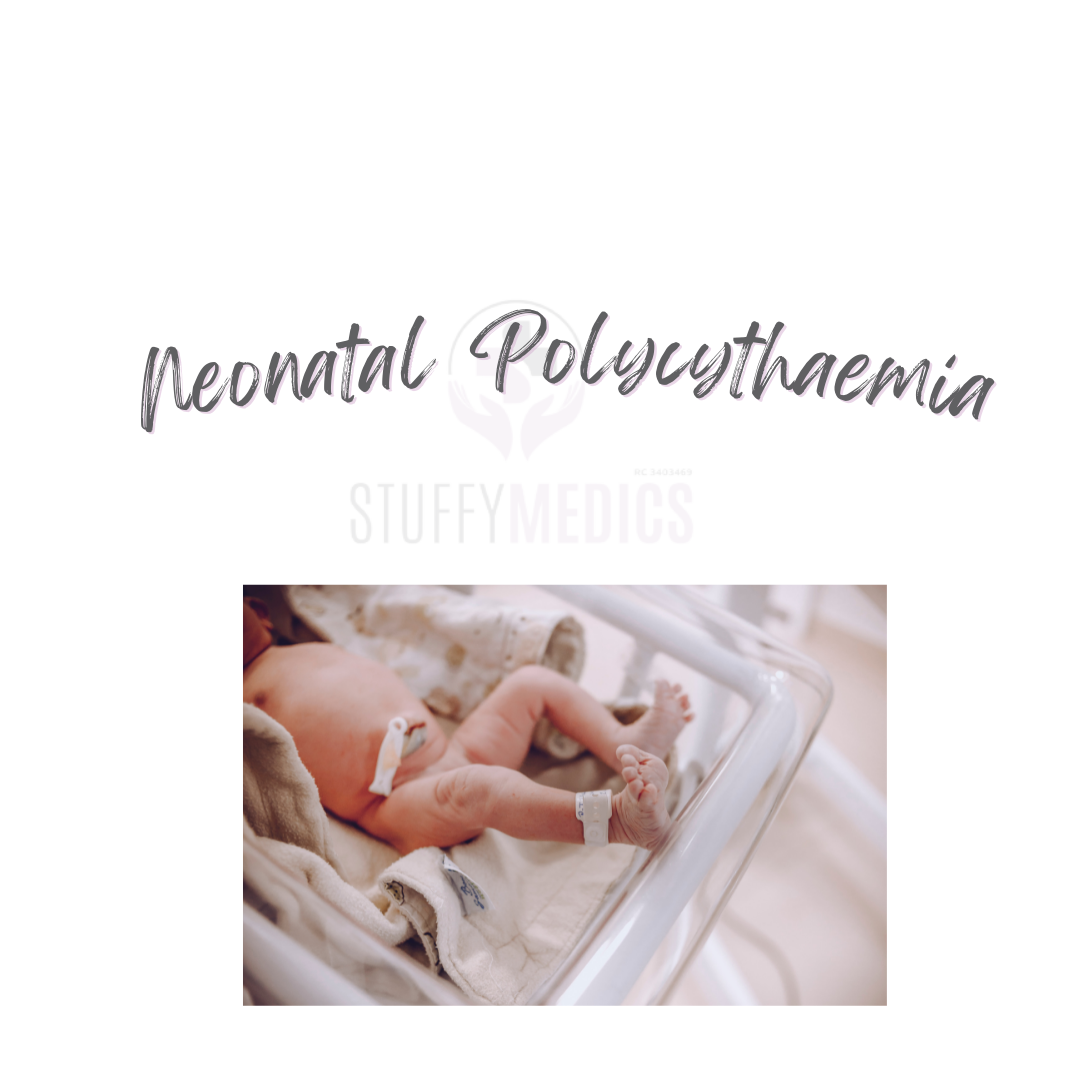Polycythaemia can be defined as a venous haematocrit of 65% or more OR a venous hemoglobin concentration in excess of 22 g/dL. Hyper viscosity is defined as a viscosity greater than 14.6 centipoise at a shear rate of 11.5 per second[1]
Risk Factors
- Small for gestational babies
- Post date babies/ post-term babies
- Large for gestational age babies
- Maternal smoking
Aetiology
The causes are classified as having active (increased fetal erythropoiesis) or passive (erythrocyte transfusion) polycythaemia. [2]
Causes of passive polycythaemia are:
- Delayed cord clamping
- Twin-twin transfusion
Causes of Active polycythaemia are:
- Placental insufficiency: hypertensive disease or diabetes in the mothers
- Toxemia of pregnancy
- Neonatal Congenital adrenal hyperplasia,
- Neonatal thyrotoxicosis
- Neonatal hypothyroidism
- Beckwith-Weidemann syndrome
- Trisomy 21
- Trisomy 13
- Trisomy 18
- Drugs like propranolol
Pathophysiology
In polycythaemia there is increased viscosity and sluggish blood flow as a result of the increase in the number of red blood cells. As the blood viscosity increases, there is impairment of tissue oxygenation and perfusion and increased tendency to form microthrombi.
Clinical features
Polycythemia can result in a wide range of symptoms involving several organ systems, however, some neonates could be asymptomatic. Most of these symptoms are non-specific, and may be related to the underlying conditions rather than due to polycythemia. The clinical features include:
Central nervous system
- Early: Hypotonia, irritability, jitteriness , seizures and infarcts
- Late: motor deficits, lower achievement and IQ scores
Metabolism
- Hypoglycemia
- Jaundice
- Hypocalcemia
Cardiovascular system
- Tachycardia, gallop rhythm, heart failure
- Echocardiography: increased pulmonary resistance, decreased cardiac output
Respiratory system
- Tachypnea, respiratory distress, Cyanosis, plethora
- Chest radiography: cardiomegaly, pulmonary plethora[3]
Gastrointestinal tract
- Poor suck, vomiting
- Feed intolerance – abdominal distension
- Necrotizing enterocolitis
Renal system
- Oliguria (depending on blood volume)
- Transient hypertension
- Renal vein thrombosis
Others
- Peripheral gangrene
- Tendency to gallstone formation.
Treatment
Before a diagnosis of polycythemia is considered, it is mandatory to exclude dehydration. If this is present, it should be corrected by increasing fluid/feed intake[3]. The hematocrit should be measured again after correction of dehydration.
Management of polycythemia is dependent on the presence of symptoms suggestive of polycythemia and/or the absolute value of hematocrit.
- If the venous hematocrit is 65% - 69% and the neonate is asymptomatic, Observe and/or give extra 10-20mls/kg of fluid
- If the venous haematocrit is 65 -69% and the neonate is symptomatic, a partial exchange transfusion should be performed.
- If the venous hematocrit is > 70% and asymptomatic, a partial exchange transfusion should be performed.
Partial exchange transfusion involves removing some of the blood volume and replacing it with normal saline so as to decrease the hematocrit to a target haematocrit of 55% without inducing hypovolaemia.
The volume to be is calculated using the formula below:
Blood volume x (observed hematocrit – desired hematocrit) /Observed hematocrit
Blood volume =80mls/kg
References
- Ramamurthy RS, Brans WY. Neonatal Polycythemia I. Criteria for diagnosis and treatment. Pediatrics 1981; 68: 168-74.
- Juan I. Remon, MD; Aarti Raghavan, MD; Akhil Maheshwari, MD. Polycythaemia in the newborn. American academy of pediatrics
- newbornwhocc.org. polycythaemia in Neonates

